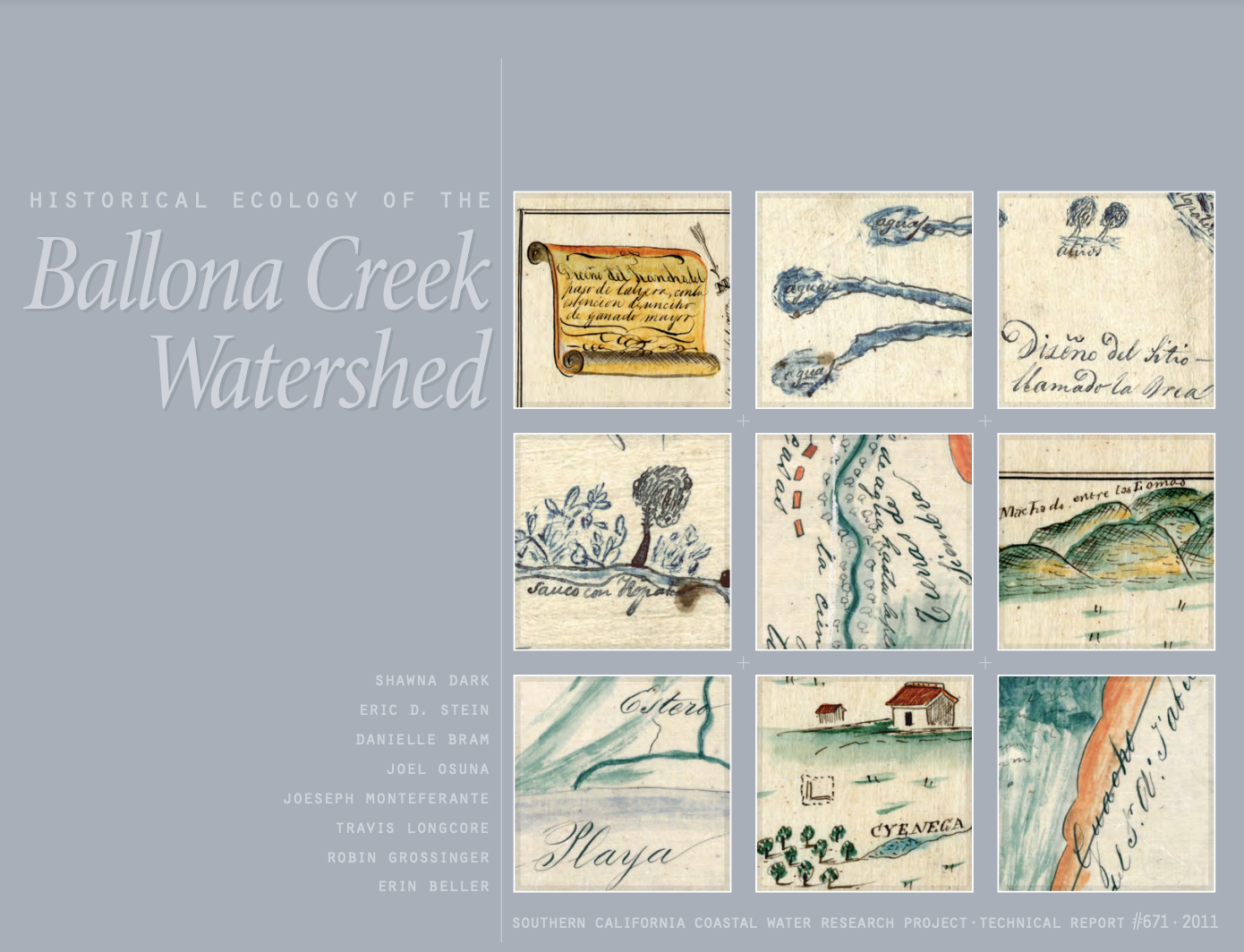Looking across the vast urbanized landscape in the Los Angeles Basin, it is almost impossible to imagine the natural landscape prior to human development. The remaining wetlands leave only a few clues about the past wetland complexes in this region. Nevertheless, the past is vital to understanding the foundation of landscape-processes, historical wetland distribution, and human impact that lend to a better understanding of sustainable restoration plans within the constraints of the contemporary landscape.
The primary goal of this project was to identify the characteristics of historical wetland habitat types and describe the historical form of major creeks in the Ballona Creek watershed. Our target time period was 1850-1890, just prior to contemporary impacts but after the migration of the Los Angeles River, which fundamentally altered the hydrology and morphology of the watershed. It is also a time period that is relatively data rich associated with information compiled around the time of statehood.
We set forth to answer the following questions:
- What was the extent (acreage) of persistent riparian, wetland, and associated floodplain habitat in the Ballona waterhshed?
- What were the predominant types of wetlands in the watershed and what was the spatial distribution of these wetlands within the watershed?
- What potential resources are available for stakeholders and scientists wanting to pursue further and more detailed research on this watershed?
